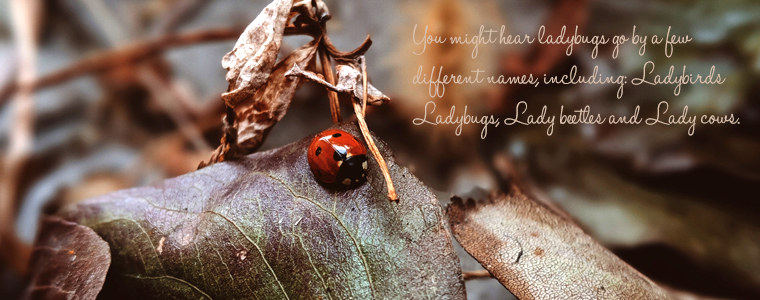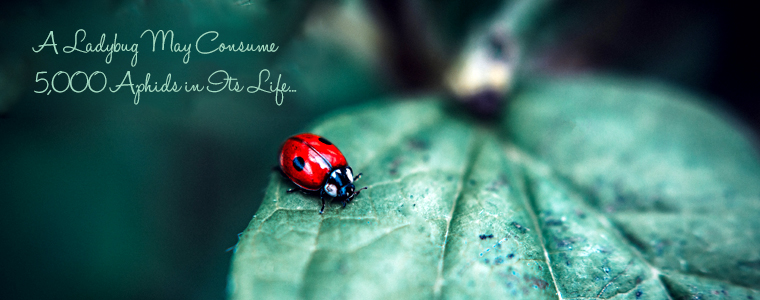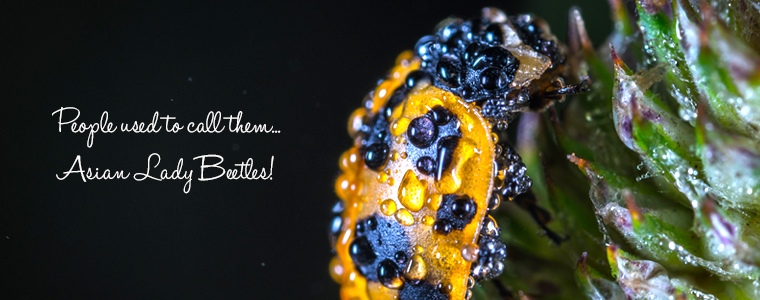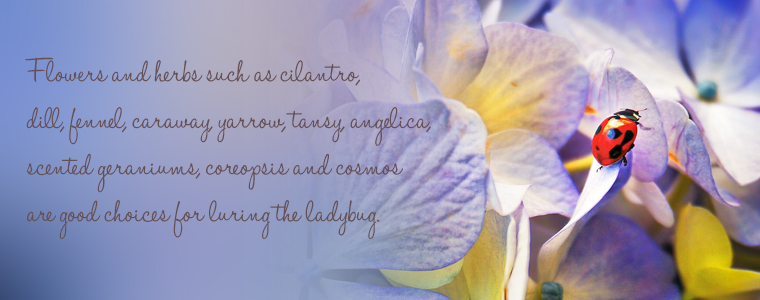Ladybugs are featured in the list of potential natural enemies. They are considered as a colorful insects capable of destroying pests in the garden to protect plants. Learning about ladybug has never been redundant for those who are heading towards organic farming.

Overview of ladybug
The Ladybug (Coccinellidae) is an insect belonging to the beetle. Ladybugs are actually the common name for many small insects, they are round like a tiny turtle, only about 5–6 mm in diameter, covered with armor, 6 short legs. They are colorful and often red, orange or yellow with dark spots on the back of the wings. Ladybugs are afraid of birds, frogs, wasps and dragonflies.

Ladybug is a natural predator “greedy”
Ladybugs are categorized according to their number of dots and body morphology. Accordingly, we can distinguish between those that are harmful and which are beneficial to agriculture.

Carnivorous ladybug (beneficial)
This ladybug is carnivorous, has an orange-red color, shiny wings because it eats a lot of meat, and has few spots on its body. Their food is parasitic insects including aphids, mealybugs, red spiders. An adult ladybug can eat more than 100 aphids in just one day. Because of the predatory behavior, ladybugs are considered as a nightmare of red spider and aphids.

Ladybugs eat plants (harmful)
This ladybug loves to eat “vegetarian”, they have a pale color, usually orange-yellow, because they eat vegetables so they have slightly rough wings. There are usually many small black spots on the body, about 28 dots. This is a common plant pest in Vietnam. This kind of ladybug tell us 1 thing… It’s not always “vegetarian” that is considered beneficial …

Ladybug lifestyle
In the spring, aphids eggs hatch, at the same time ladybugs also “wake up” after the hibernation time so ladybugs have an abundance of food. They hunt most strongly in the spring until the fall. Ladybugs lay eggs on the back of leaves. Eggs are oval in shape, yellow, about 1 to 1.5 mm long and cling to leaves. A ladybug lays 10-20 eggs, a life cycle can lay up to several thousand eggs.

Ladybug ability
Ladybugs “treat” harmful insects. They are natural enemies, their favorite foods include: aphids, red spiders and mealybugs. Ladybirds can even eat these insects during their larval stage or adulthood, a ladybug will eat thousands of bugs in life. Therefore, gardens that are attacked by spiders and aphids will no longer be a problem once a ladybug is present.

As an important natural predator in sustainable organic farming models, people are increasingly taking advantage of this insect’s potential.
Minimize costs for crop care
The development of ladybugs helps to control insect pests, this is natural agricultural solution that helps to limit the use of pesticides. Therefore, the use of ladybirds to protect crops is contributing to saving on pesticide costs as well as improving agricultural production efficiency.

Solution for chemical resistance of insect pests
The misuse of pesticides and herbicides has made some pests adaptable and created chemical resistance to pesticides. The most effective alternative is using biological pest control.
Ladybug contributes to plant protection
Ladybugs “process” mealybugs, spiders, … into their food, they make the ecosystem become diverse. Contribute to the protection as well as crop development.
How to lure and develop ladybug
Ladybugs will stay in the garden if we create an environment for them to grow. Food is the first factor if you want to attract ladybugs.
Useful ladybugs usually eat meat, they also eat pollen, when the garden has these things, they will often come. So if you want to lure the ladybug, plant plants like garlic flowers, genus seeds, dill, daisies, snow coriander, coriander, parsley, marigold, etc.

In particular, marigold attracts ladybugs with the smell of leaves and flowers, when flowering, the ladybug comes more. Beside that, the roots of marigolds also secrete a compound that repels harmful parasites in the soil. When planting plants that attract ladybugs, pay attention to planting in clusters because ladybirds like to hide in the shade. After eating aphids, they often fly to the nest to sleep and lay eggs.



